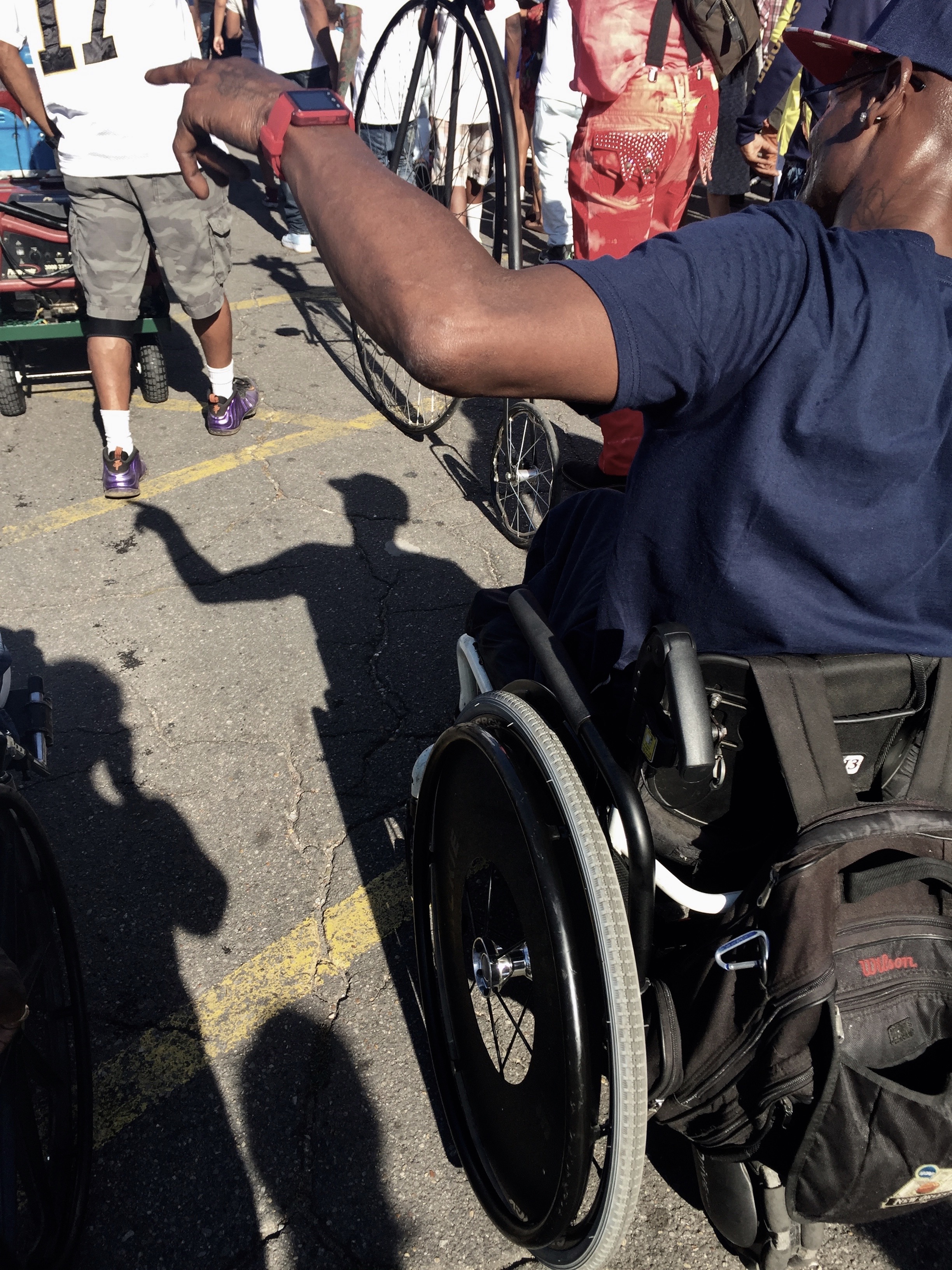This photo was taken while following Skelly at a second line parade in New Orleans. These parades, hosted by neighborhood social clubs each Sunday, are part of the rich legacy and cultural heritage of African American communities in the city. Most of the action of the second line is actually happening outside the photographic frame: ahead of us, is a nine piece brass band and the hosting social club decked out in dandy-esque finery, behind us, members of Skelly’s own social club, specifically for wheelchair users. At the moment represented here however, I was transfixed by the show Skelly was producing on the sidewalk with the help of the mid-day sun. The subject is the act of mobility, captured in the wheelchair itself, Skelly’s arm jutting out into the field of vision, and his shadow looking back at us.
Skelly has used a wheelchair for almost 30 years, after a gun shot wound in 1989 partially severed his spinal cord. When the music is right, Skelly may lift himself out of his chair, scissor kick his legs, rock his chair back and forth, or leap out of it into the ground. At these second lines, I am often tasked by club members to document their wheelchair dances; for many gun shot injured residents with whom I work, the photo archive is a key part of the process of reconciling their pre and post-injury selves.
This picture operates on three registers: it is both visual ethnographic “data” and a methodological vehicle for analyzing the “techniques of the body” (Mauss 1973) and the dynamic of wheelchair specific mobility. Furthermore, it interrogates the politics of representation of the disabled body in public space, usually portrayed in passive acts. Furthermore, survivors of street gun violence, like Skelly are often portrayed as criminally responsible for their own condition, at best, “guilty victims”. What does the disabled Black body claim and contest through dance?
Mark Anthony Neal (2013) a scholar of critical race and gender studies, theorizes that “Black men are bound to and bound by their legibility” (p.6). Legibility describes how the mainstream public “reads” black men as a criminal threat, thus subject to surveillance and incarceration. Masculinities and identities outside of these formations become illegible- unknowable, even when right in front of us. The oversaturation of contemporary news media with images of Black trauma and the violence done to Black bodies compounds this legibility crisis, and renders photographic images as confining representations which bell hooks (1995) refers to as “the crucial realm of struggle” (58) in a racial politics of Black liberation.
As the anthropologist- witness, I see my own shadow in this photograph caught in the act of seeing. What did my own perspective or biases bring to this photo? As social scientists we are producers and disseminators of meaning, always engaged in these politics of representation in our research. As such our photographs can either constrain or, we hope, compose one small act towards liberation.

Commentary on Rachel Tanur's Works: Drag Queen 1